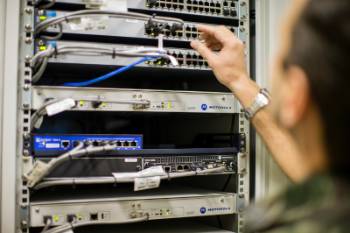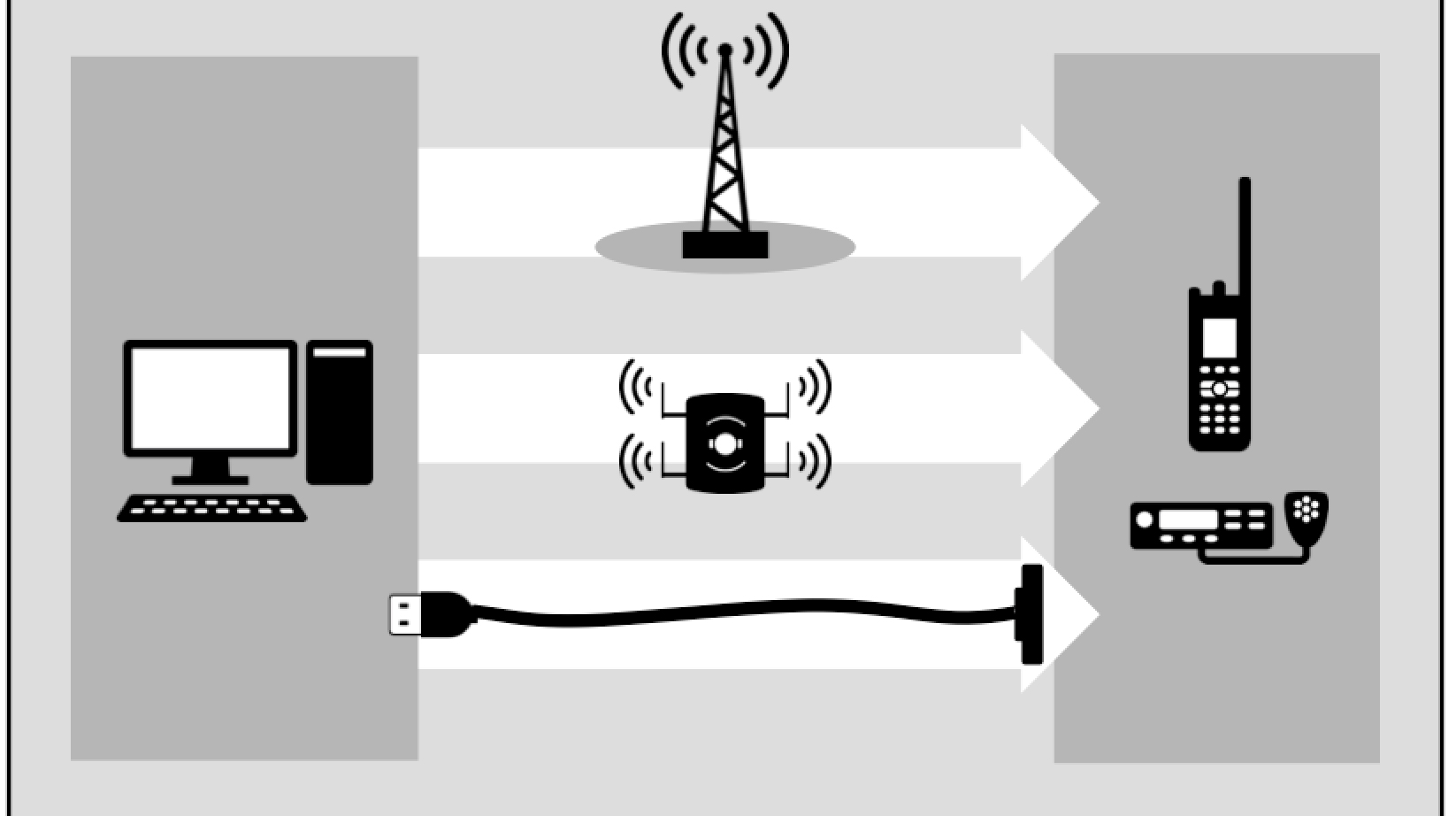According to a recent Motorola Solutions Law Enforcement Survey, 25 percent of agencies indicated they were already partnering with local businesses to integrate private video into their existing public security infrastructure. A prime example of this partnership is Detroit Police Department’s (DPD) Project Green Light. In a Police1 Webinar hosted on August 25, 2022, DPD shared insight and advice from the Green Light project including these suggestions for starting a community camera program.
What is a Community Camera Program?
A community camera program enables community members to share security camera information with public safety in order to help prevent and address crime at their location.
#1 Begin with the end in mind
The best place to start is by thinking about what problems for your community you are trying to solve – identifying your community’s challenges is key to beginning a community camera program. What are the biggest issues that your community faces? What problem is your agency looking to solve through the community camera program? Which community locations are being impacted by these challenges?
In Detroit, the Detroit Police Department (DPD) identified a significant uptick in carjackings and robberies. DPD analyzed this trend and noticed that a large majority of them happened primarily at gas stations. Assessing these locations, it became clear that these places were difficult to police for many reasons – the density of the stores, the 24/7 operation and condition and lighting of the facilities.
#2 Know your partners
It’s crucial to understand the problems of your community partners to explain what’s in it for them. By understanding your partners’ challenges, you can communicate more effectively about why a business or private organization should join your program.
“We [asked the question], what makes this business desirable for crime?” said Chief James White. Businesses operating in the city of Detroit have a number of challenges: high volume with late hours, trying to provide a professional product to the community in a safe environment. “So what was in it for them,” said Chief White, “was being able to have our help with smaller problems that escalated into much bigger problems; for example, kids coming in at a low level doing retail frauds would gradually turn into late night after party places for people to stop for drinks, causing fights to break out. And then the more serious crimes like carjackings and robberies.”
#3 Build a base of support
A public-private partnership program allows private organizations and businesses to play a role in actively protecting their places and communities. It’s important to communicate the value of the program to all partners, businesses and government stakeholders such as elected officials, in order to build a strong base of support.
When the Green Light program started, the city of Detroit was going through bankruptcy and the city was trying to find a way to bring community trust and safety back. Improving neighborhood safety, promoting the revitalization of growth and businesses and deterring, identifying and solving crime was a priority to every person that lived, worked or played in Detroit. Having the community and local government all on the same page about the importance of safety and revitalization was key to the program’s support, especially at the highest level of city administration, the Mayor’s office.
“Safety is everyone’s responsibility, not just the police,” said Chief White. “The core of the conversation with all of [our partners] is how do we work together for a safer community.”
#4 Start small
Starting with a core group of community stakeholders allows you to build trust before working to increase the number of participants. At the early stages of your program, partners are able to have a high level of access to the police department and it’s easier to manage accountability on both sides of the relationship.
In Detroit, the agency hand-picked eight gas station business owners to be the initial pilot participants in their program. These business owners helped to spread the word about the program and talk about the successes in their business (including increase in patronage), which helped with the future growth of the program through community awareness and word-of-mouth.
“Starting small is smart,” said Chief White. “When we started, we had four real-time intelligence consoles (RICs) and two cubicles, a couple of cops and a whole lot of heart.”
#5 Address specific problems
Focus on the specific problems of the businesses or partner organizations within the program. These could be factors that are contributing to the increase in crime at these locations or the reasons why the partner needs assistance from law enforcement.
One of the biggest corrections that DPD helped address at partner locations was the lighting. Without proper lighting, it was not possible to capture real-time video or footage after-the-fact at the business when an incident occurred. Businesses didn’t just need a camera to participate in the program: they needed the right kind of camera for decent resolution and they needed it positioned in the right direction to capture an image for media releases, facial recognition, court, or other uses. Lack of sufficient light nullified all of these other preparations, so it was important to coach the participants on the benefits of proper lighting.
#6 Provide crime reduction recommendations
Another great opportunity in a community camera program is to have police department personnel provide specific recommendations for crime reduction at the business location. Most businesses’ security is focused on risk management and loss prevention as opposed to major crimes. Having the police department’s personnel visit a business to broaden their perspective of potential crimes and give guidance on best practices is a major benefit.
DPD uses Project Green Light to partner and advise businesses on safety and security at their location. In addition to having the connected camera feeds in their RTCC, DPD established a schedule for patrol officers to regularly stop by businesses in the program and speak with whoever from the business was on the premises at the time. This re-enforced to the business that they were true partners, and also showed customers that DPD was actively engaged with businesses in the program. Partner locations and business patrons benefited from an additional degree of safety awareness with inputs from DPD representatives.
#7 Support cost of participation
Consider how you can support businesses, especially small businesses that operate on thin margins, to be able to afford to participate in your program. This could be in the form of grant assistance or business partnerships, to minimize the barriers to join the program due to cost.
Detroit’s Green Light program partners needed to pay for upgraded lighting, signage, additional cleaning, security camera equipment and Internet in order for DPD to receive the camera feeds. To help support small businesses with the upfront costs of joining the program, DPD approached the major internet provider in the area, Comcast, to create packages for program members to lease equipment and spread the cost out over years instead of needing to pay a significant upfront expense.
#8 Build to scale
As your program grows, so will the resources needed including people, process and technology. When making major decisions, think about the growth of the program to ensure that you’re making decisions that won’t limit you down the road. Thinking about your program in stages can assist with budget planning and getting buy-in from government officials.
DPD started out with only four real-time intelligence console (RIC) workstations. Eventually, the operation grew to 14 workstations as its public-private partnership grew to support 800 local businesses. At that point, DPD was able to make the case to its local city leadership to invest in a $12 million, centralized Real-Time Crime Center – at the same time, opening two precinct-level centers in the business precincts in the city, each with two workstations.
#9 Staff effectively
The more partners that join, the more personnel will be needed in both patrol and command operations. Agencies hire a mix of sworn and civilian personnel as operators; with current sworn personnel shortages on the street, staffing the center with civilian operators can be a helpful option. The more camera feeds available, the more time and personnel it will take to manage and access video during critical events.
At DPD, the agency started with just 25 people and grew to over 100 including senior crime analyst positions and 50 supporting patrol officers.
#10 Use technology that enables your workflow
Today, agencies struggle with the multitude of inputs (video, audio, data) and need structure that helps present actionable information to operators. Situational awareness software such as CommandCentral Aware can help to facilitate this by triggering alerts based on priority events (such as a 9-1-1 call) and automatically displaying any connected nearby camera feeds from businesses sharing video streaming in the public-private partnership.
“It’s important when considering technology that it’s scalable,” said former Assistant Chief David LeValley. “As you grow, can your technology grow with you? We wouldn’t have wanted something that limited the number of businesses that we were able to bring on the program.”
#11 Facilitate business registration
It can be a challenge to obtain information at scale from your partners to be able to access it during a critical incident. Once a business or private organization is ready to join your program and share their information, it’s important to have an easy way for that entity to sign up, share their information and learn how to connect their cameras.
Making it easier for a business to connect or explore options to purchase equipment helps to support your program’s long-term growth. By allowing private organizations to procure their own equipment, your agency can prioritize budget towards the costs of providing extra protection and safety for those community locations.
Community partner registration can be streamlined with an online experience like Protected Places, which makes building those connections faster and easier than ever before.
#12 Provide options for camera connection
Different partners will have different levels of interest in sharing their security cameras with public safety. If the places in your community want to integrate their own security cameras, a connector device such as the edge appliance allows secure camera livestreams. Additional hardware is an added cost, however, so for organizations that are already utilizing cloud-based video management, a cloud-to-cloud video integration to your center could be the most cost effective solution.
Even with only a few video feeds, a solution that integrates and manages many disparate video sources and can support a significant number of camera feeds such as CommandCentral Aware is important to consider.
#13 Engage in community outreach and advertising
Outreach, outreach, outreach. Once the program is off the ground, be sure to spread the word as much as possible about the program and its successes.
Detroit’s community police partnership included the installation of a green light beacon at participant partner locations. As the program became known in the community, DPD eventually trademarked the “Green Light Project”. Eventually it became so successful that community members demanded that certain businesses join the program.
#14 Showcase your operations
Many agencies facilitate tours and presentations of their real-time operations in order to build stakeholder support and provide transparency of the work and technology. Consider ways to show the work of your center to key stakeholders, such as the program business owners, city or county officials and news media representatives. This can help to facilitate word of mouth awareness as well as education and support from key community members.
Detroit hosts quarterly meetings with all of its Green Light program business owners where they can come in and see the operation in action.
#15 Share your wins
Be as transparent as possible when it comes to media relations. Sharing your program’s “wins” not only helps with the transparency with the community but also helps to build support for the program.
During a major crime, DPD chooses to push information from their RTCC to the news media, invites them into the center and allows them to see any information that is declassified and public.
“If we can make the business of crime uncomfortable for the criminal, then we’re winning,” said Chief White.
Today, cameras are already being used to protect our most important places – from the cameras in our pockets to our neighborhood businesses and community gathering places. Community camera programs help the public partner with public safety for safer places.




